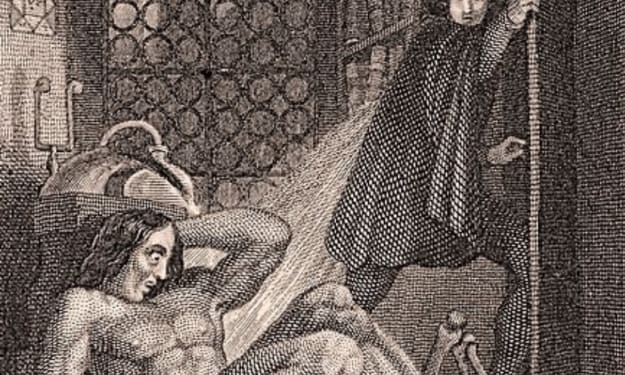
Over the long haul, Romanian fables has roused a great deal of stories and fantasies with astounding characters and fictional universes, loaded with implications and stories. The creative mind of individuals and the occasions that occurred both in the city of the towns and in charge of the nation, have brought forth stories that join the genuine and the incredible and in which the great generally arises triumphant. Strong, children of rulers, wonderful young ladies, basic individuals, witches, mythical serpents with seven heads, this large number of mystical characters lead a ceaseless, brave battle, which the peruser savors with unquenchable.
Vlad the Impaler was brought into the world in an honorable family, his progenitors being thus leaders of the Romanian Country, a locale found south of the Carpathians. His dad was a lot of adored by the King of Hungary, Sigismund of Luxembourg, who called him a Knight of the Order of the Dragon, a gathering of European aristocrats of the greatest position who needed to safeguard Christianity from the Ottoman danger. The image of this request was a gold emblem addressing a wound mythical beast. In Latin, "draco" signifies "mythical beast", yet in Romanian it comes exceptionally near "demon". Since the having a place with the request was acquired from father to child, Vlad the Impaler was picked with the name of Vlad Dracul or Dracula, which implied both mythical beast conveyor and child.
In 1448, after the passing of his dad, Vlad turns into the leader of the Romanian Country, a title for which he should take on various conflicts with his opponents. It took the courageous man eight years to get the seat at Targoviste. Here he is presently on the high position, with a passionate longing to free Christendom from the Turkish burden. Prior to beginning an extraordinary assault against the king, Vlad believed his nation should be all around made due, rich, with a pre-arranged armed force and to have partners prepared to come to his guide in the event of peril. Whenever he first speared the extraordinary boyars whom he thought to be his rivals. Until we figure out how equity was laid out in the Romanian Country, I should listen for a minute is the impalement, this awful discipline that brought the voivode the name of The Impaler and which put him on the map both in the nation and all through Europe.
Impalement was the absolute most horrible torment used to grab admissions or to take a man's life, comparative around then to consuming at the stake. The sheath was a huge tarus, taller than the height of a man, with an exceptionally sharp tip; it penetrated the man through his paunch or back, rising to the top through his neck or mouth. Then he was caught in the ground, with the goal that the trooper hung his arms and head. The reason for the discipline was to cause unspeakable actual torment, and his demise didn't happen right away. The convict passed on both of craving, of thirst, or of the assault of the ravens. The picture was so sickening for the spectators that nobody needed to overstep the regulations in The Impaler's territory.
Vlad got away the boyars adversaries, hobos and cheats, reinforced the posts and the military and brought new weapons. One more proportion of the ruler was coordinated against the Saxon dealers who exchanged detail in the nation, denying the neighborhood Romanian shippers of a huge piece of the addition. It is perceived that the Saxons who ignored the order were pierced. During the six years of his rule, Tepes rebuffed the People of Brasov and the People of Sibiu for supporting one more inquirer to the privileged position. In 1462, Vlad is double-crossed by his sibling and detained for quite a long time by the King of Hungary, Matthias Corvinus. Impaler recovers for the last time the seat of the Romanian Country, yet bites the dust not long after during a Turkish intrusion (1476). A few legends say that he was shot somewhere near foes in the fight, others guarantee that he was killed by the Wallachian boyars or that he was mixed up by his exhausted men with a Turkish commandant. The ruler's head was shipped off Constantinople to eliminate any uncertainty about his passing, and the body, covered at snagov religious community, was rarely found.
A less known anecdote about Vlad the Impaler is the one that discussions about his human instinct, heartfelt, and his affection relationship with the saxon Katharina Siegel. The girl of a weaver from Corona (the present Brasov), Katharina remained with the ruler for quite some time, giving him five youngsters. Whenever he met Vlad, the 17-year-old young lady was battling to pull a sled with food, and the valiant, cruising by, leaped to his guide. The impaler immediately fell head over heels for her, failing to remember just about the other relationships, and had a go at anything to entice her.
n 1459, when the ruler rebuffed the Saxons who exchanged the city of Brasov, the spouses of the vendors got her on the young lady, attached her to the Pillar of ignominy and cut her mowns. To free the young lady of the anger of the Saxons, Tepes needed to free the vendors. Vlad particularly needed to wed Katharina, so he requested that the Sovereign Pontiff drop his union with his most memorable spouse, Anastasia. The two didn't get to formalize their relationship, as the ruler was detained by King Matthias Corvinus. Katharina stayed dedicated to Vlad during this time, and after his passing she resigned to the cloister. Despite the fact that introduced particularly as a horrendous despot, here we see that The Impaler had the most human sentiments, being hopelessly enamored with the wonderful Katharina.
A previous Janissary of the Ottoman armed force told how, in the mission of 1462, Tepes had the noses of the relative multitude of Turks got sliced off and sent them to King Matthias Corvinus, along these lines showing him his prosperity. One more announced how the ruler provided the request that the fort be encircled by two columns of wall, and the spot between them to be loaded up with Moldovans, Hungarians and Wallachians skewered. Furthermore, in addition to that; the parts of the trees hung hanged individuals and Voda had instructed that the people who might bring them down to be bound in their place.
Wheat Castle sightseers who come to Romania pulled in by the legend of Dracula are making a beeline for Bran Castle, where they hope to track down an unnerving, dull spot, tormented by apparitions. Without a doubt, the royal residence summons the captivating middle age environment, Vlad the Impaler spending here a period during the long stretches of the prison to which he was oppressed by King Matthias Corvinus. In Bran, the first to construct a stronghold were the Teutonic Knights, then the Brasov public based on a similar spot a stone fort. The similarity to the vampire-include's home in Stocker's clever made Bran Castle the fundamental goal of travelers anxious to remake Dracula's way.
Grain Castle vacationers who come to Romania pulled in by the legend of Dracula are going to Bran Castle, where they hope to track down a startling, dull spot, tormented by apparitions. To be sure, the castle summons the captivating middle age environment, Vlad the Impaler spending here a period during the long stretches of the prison to which he was oppressed by King Matthias Corvinus. In Bran, the first to construct a stronghold were the Teutonic Knights, then, at that point, the Brasov public based on a similar spot a stone fort. The similarity to the vampire-include's home in Stocker's original made Bran Castle the principle objective of vacationers anxious to reproduce Dracula's way.
Bucharest is somewhere else where Tepes made some meaningful difference. In the focal point of the city you can visit the remnants of the Princely Court worked in the fifteenth 100 years, referred to the present time as the Old Court Palace. As indicated by legends, in the root basements were kept detainees. Close to the city there is the Snagov Monastery, where the ruler was covered. Despite the fact that his substantial remaining parts have never been found, the spot of love bears over the long run the memory of the incomparable Impaler.
Legend manat of the battle for, not set in stone to liberate individuals from the Turkish border, perhaps the cruelest ruler that the Roman Lands have known, merciless and ridiculous dictator, the vampire-include covered in secret, so is known The Impaler, called Dracula, in the nation and abroad. An equity that Romanians frequently puzzling person who interests outsiders, Tepes stays one of the most questionable figures ever. The authority records and stories brought into the world in individuals have been interlaced such a huge amount after some time that nobody can say precisely the number of the legends intertwined around him are valid and the number of are fantasies.
About the Creator
silviu69
Subscribe to my stories!
Show your support and receive all my stories in your feed.
Enjoyed the story? Support the Creator.
Subscribe for free to receive all their stories in your feed. You could also pledge your support or give them a one-off tip, letting them know you appreciate their work.





Comments
There are no comments for this story
Be the first to respond and start the conversation.